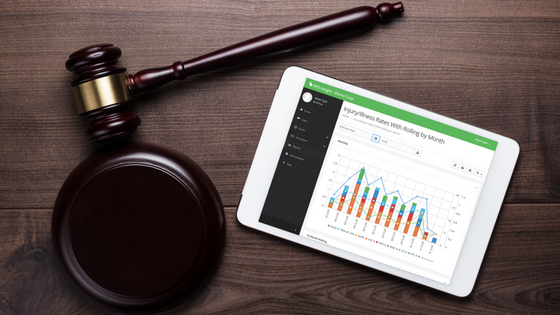Government agencies wrote the book on EHS compliance and regulations, but that’s not to say their own EHS execution is perfect. Government departments at the local, state, and federal levels alike can struggle when it comes to maintaining their own high EHS standards.
Because government departments are often regarded as the example others should follow, it’s critical that EHS remains a top priority among all agencies at all times.
With a strong EHS strategy in place, citizens and business organizations alike are more likely to watch and learn from your EHS successes rather than your shortcomings.
It Starts with Setting the Right Expectations
Government agencies span the gamut of duties and purposes, from office desk jobs to working with hazardous chemicals or waste. Each agency, from the Department of Defense to the Internal Revenue Service and everywhere in between, experiences their own set of risks and challenges in maintaining a safe work environment. It’s this variety that makes it nearly impossible to establish a single working government EHS program that’s relevant to every agency.
Oftentimes, government agencies are held to the same EHS requirements as manufacturing or other similar organizations, depending on function. However, this compliance is often complicated by additional requirements related to security and clearance concerns, cybersecurity, limitations in budgets, and siloed responsibilities.
These challenges only further the need for a strong EHS strategy. Start by addressing what, specifically, your agency expects to achieve by improving EHS operations.
- What does your current EHS program lack?
- Where are the existing gaps in executing your strategy?
- Who is involved in creating and carrying out EHS operations?
- Who should be involved in creating and carrying out EHS operations that isn’t already participating?
- What will your organization gain from improving your EHS program?
- What metrics are you/should you be using to gauge your program’s effectiveness?
Knowing what you’re already achieving with your EHS operations will guide your decisions and actions on how to make valuable improvements.
Choosing the Right Tools for EHS Strategy Execution
Improving the strength of your EHS strategy doesn’t just happen by accident. It takes careful thinking and planning, in addition to leveraging the right resources.
Government agencies are finding success in streamlining their programs with EHS software that manages a multitude of tasks and details with minimal involvement from employees.
In the past, agencies mostly relied on paper filing systems and massive binder collections to organize their data, including compliance reports, workplace incidents, audits, inspections, and procedures. The margin for human error was high. It took countless hours and multiple personnel to sort, file, and find papers and log information.
The digital era ushered in the paperless revolution, but many agencies still find themselves in a similar, disjointed situation as they were before. A lack of communicating systems limits users’ abilities to find and share information quickly. In addition, these silos didn’t allow various components of your EHS operations to work together as a single strategy.
EHS software for government agencies was developed solely to combat these and other complexities. By streamlining your operations EHS-specific software, users can rely on a single platform for data relating to audits, inspections, safety training, workplace observations, and other information that’s critical to upholding your strategy.
Some EHS software solutions can integrate with other systems to expand your operational flexibility and efficiency.
As a result, government agencies can simplify their EHS responsibilities and gain back valuable man-hours that can be better utilized in making an impact on the people they serve.
In Closing
The government is largely responsible for establishing and improving EHS requirements, but that also means it has the burden of upholding them. Leveraging EHS software is quickly becoming a top priority among agencies of all sectors, from offices and schools to military and other high-risk departments, because of its ability to laser-focus on specific areas without extensive manual involvement.
Automating as much of your EHS program as possible means less chance of tasks and details falling through the cracks. Decades of research, development, and implementation have gone into creating existing EHS standards for agencies across the board. Imagine how much better those standards can become when you can invest less time in managing them and more time in improving them.
Click here for more information on how EHS software can benefit your government operations.
